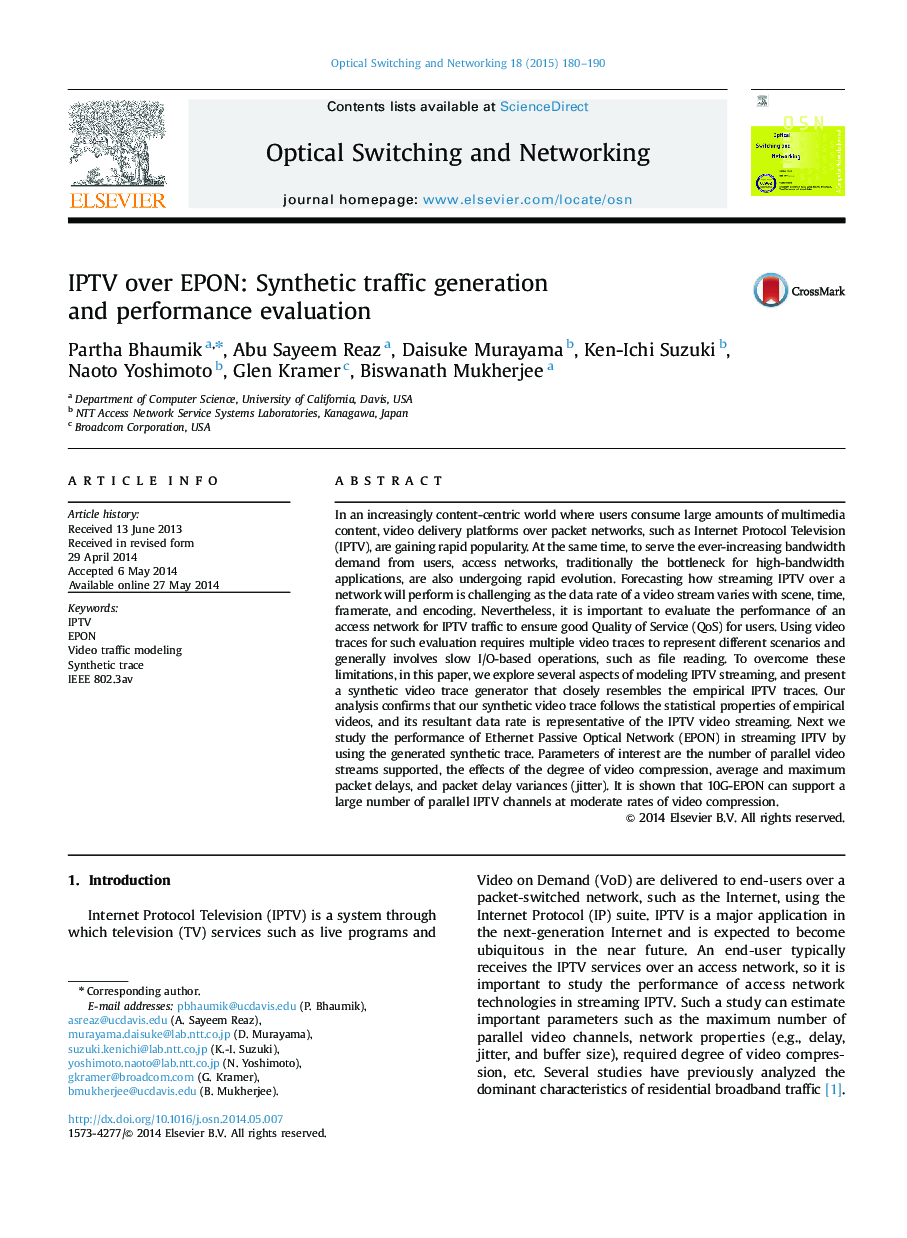| Article ID | Journal | Published Year | Pages | File Type |
|---|---|---|---|---|
| 463575 | Optical Switching and Networking | 2015 | 11 Pages |
In an increasingly content-centric world where users consume large amounts of multimedia content, video delivery platforms over packet networks, such as Internet Protocol Television (IPTV), are gaining rapid popularity. At the same time, to serve the ever-increasing bandwidth demand from users, access networks, traditionally the bottleneck for high-bandwidth applications, are also undergoing rapid evolution. Forecasting how streaming IPTV over a network will perform is challenging as the data rate of a video stream varies with scene, time, framerate, and encoding. Nevertheless, it is important to evaluate the performance of an access network for IPTV traffic to ensure good Quality of Service (QoS) for users. Using video traces for such evaluation requires multiple video traces to represent different scenarios and generally involves slow I/O-based operations, such as file reading. To overcome these limitations, in this paper, we explore several aspects of modeling IPTV streaming, and present a synthetic video trace generator that closely resembles the empirical IPTV traces. Our analysis confirms that our synthetic video trace follows the statistical properties of empirical videos, and its resultant data rate is representative of the IPTV video streaming. Next we study the performance of Ethernet Passive Optical Network (EPON) in streaming IPTV by using the generated synthetic trace. Parameters of interest are the number of parallel video streams supported, the effects of the degree of video compression, average and maximum packet delays, and packet delay variances (jitter). It is shown that 10G-EPON can support a large number of parallel IPTV channels at moderate rates of video compression.
